- Multiple rookies land in ideal spots: Running backs Ashton Jeanty and Omarion Hampton, in addition to wide receivers Tetairoa McMillan and Matthew Golden, landed on teams with clear needs at their positions.
- Travis Hunter’s playing time will be a question mark: While Hunter is expected to be a wide receiver first and cornerback second, his playing time and target total could be limited more with the Jacksonville Jaguars than it would have been if the Cleveland Browns drafted him.
- Celebrate the 2025 NFL Draft with 25% off PFF+: Get 25% off PFF+ and unlock access to player grades, fantasy tools and the 2025 Draft Guide.
Estimated Reading Time: 17 minutes
Click here for more draft tools:
NFL Draft Big Board | Mock Draft Simulator | NCAA Premium Stats
2025 PFF Draft Guide | Mock Draft Hub | Prospect Data Profiles
Draft Position Rankings
The 2025 NFL Draft is complete, and the fantasy football landscape is already shifting. From top rookie picks finding ideal landing spots to veterans suddenly facing new competition, the draft offered several key developments that will impact draft boards this summer.
Here’s a breakdown of the biggest fantasy football winners and losers of the 2025 NFL Draft.

Winner: RB Ashton Jeanty, Las Vegas Raiders
Jeanty is the best running back in the class and landed on the team that needed a running back the most. The Raiders rotated between four different running backs last season and ranked last in PFF rushing grade. Most potential landing spots would have left Jeanty in a committee, but in Las Vegas, he will receive as many touches as he can handle. His primary backup is free-agent addition Raheem Mostert, who is 33 years old. While the Raiders have tight end Brock Bowers and wide receiver Jakobi Meyers, Jeanty should finish in the top three or four in targets on the team.
The main concern in Las Vegas is the offensive line, which is just average. It could prevent Jeanty from being the top overall running back in his rookie season. However, three-fifths of the line posted a positive run-block rate in 2024, and those are the kind of plays that lead to long gains. Ideally, the young unit can take a step forward with Jeanty. He remains the clear top prospect in both dynasty rookie and dynasty rookie superflex drafts, but should also be a first-round pick in single-quarterback redraft leagues.

Winner: RB R.J. Harvey, Denver Broncos
Harvey was the fifth running back selected in the NFL draft, while both the PFF big board and consensus big boards had him as the eighth- or ninth-ranked running back. He lands with a Broncos team that needed to make a splash at the position. They earned a bottom-five team PFF rushing grade last season and lost Javonte Williams in free agency.
Harvey was an incredibly productive feature running back at UCF, averaging more than 130 rushing yards per game last season. He is also very experienced in the passing game, finishing with 1.44 yards per route run over the previous three seasons. He is on the smaller side for running backs, at 5-foot-8 and 205 pounds, but head coach Sean Payton has experience with smaller backs, such as Darren Sproles. Running backs in Payton’s offense typically have the opportunity to see a high target share, which Harvey should be able to handle.
Harvey will be far from a safe fantasy pick because the Broncos could still utilize a heavy three-man committee. However, he could have some excellent fantasy seasons in this offense.
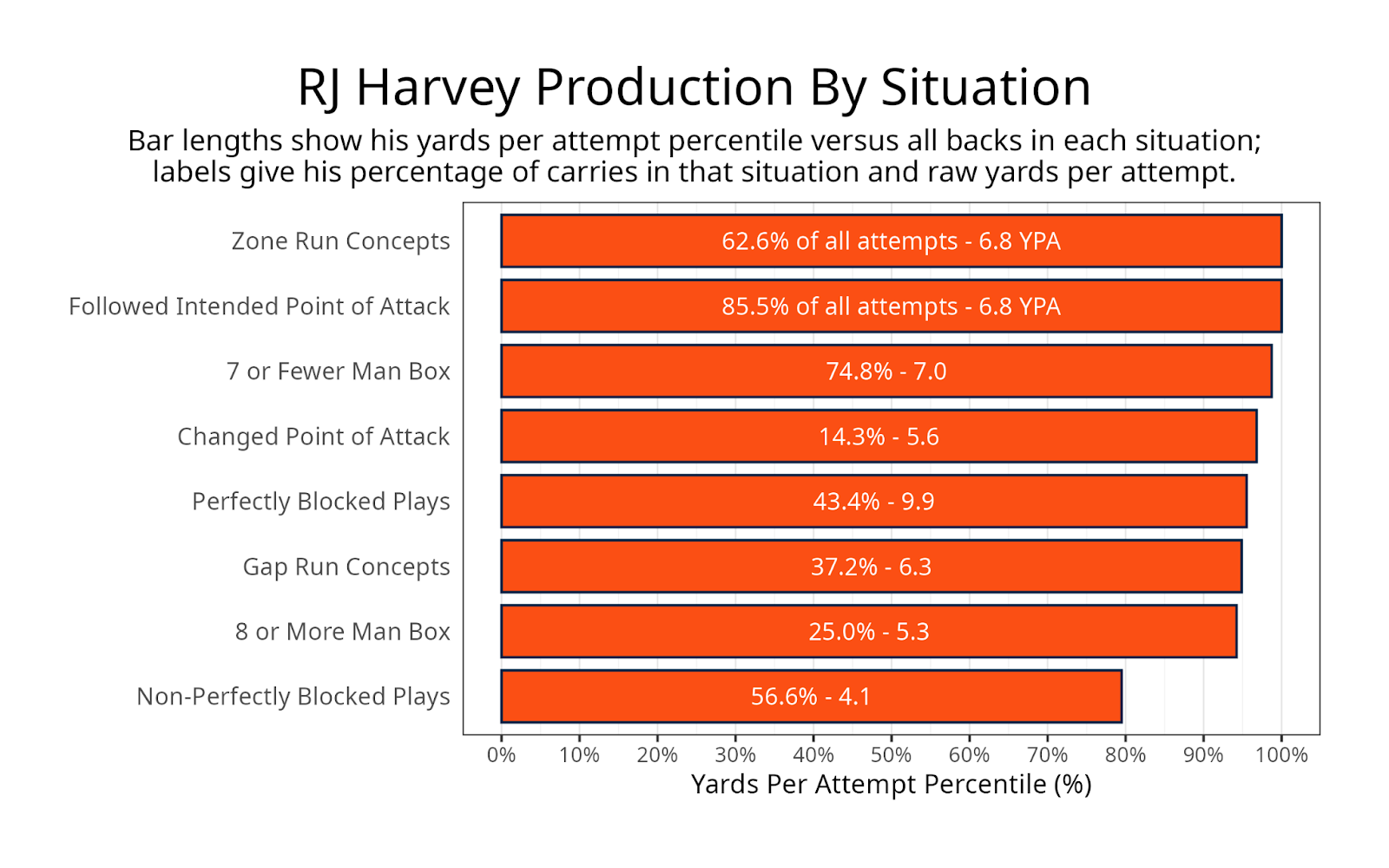
Winner: RB Cam Skattebo, New York Giants
Six running backs were selected in the fourth round of the draft, and most landed on teams with very crowded backfields. Skattebo was the highest-ranked running back remaining on PFF's big board heading into Day 3 and also joined a team with his best opportunity for playing time.
Tyrone Tracy Jr. and Devin Singletary featured in the Giants' backfield last season, and the team secured the fourth-fewest rushing yards from its running backs (1,307) and the third-fewest first downs (64). One of New York's problems has been its offensive line, four-fifths of which earned a PFF run blocking grade of 67.0 or lower last season.
Skattebo is the perfect player for that kind of offensive line, as he was one of the best running backs on non-perfectly blocked runs and one of the best at converting first downs. There is a chance Skattebo will become the Giants' lead running back sooner rather than later.

Winner: RB D’Andre Swift, Chicago Bears
The 2025 NFL Draft boasted a relatively strong class of running backs. Twelve running backs were selected in the first four rounds, the most in a season since 2020. Most teams that needed a running back ended up picking one in those rounds. Eight NFL teams earned a team PFF rushing grade of 66.0 or lower last season, and seven added a running back in the first five rounds.
The one exception was the Bears. Chicago owned the 10th overall pick and was, at times, linked to Ashton Jeanty. The team hired Ben Johnson as its head coach, and his Detroit Lions offense was built around the run game, featuring Jahmyr Gibbs and David Montgomery. The Bears' two running backs are D’Andre Swift and Roschon Johnson. Swift spent one year with Johnson in Detroit and handled the fewest rushing attempts per game in his career. Now, it appears Swift’s role is safe as the Bears' lead running back. Chicago didn’t take a running back until the 233rd overall pick, selecting Rutgers‘ Kyle Monangai.
The Cincinnati Bengals, Kansas City Chiefs and Washington Commanders were also rumored to be looking for a running back in this draft class. The Bengals didn’t pick one until the sixth round, while the Chiefs and Commanders waited until the seventh round. That is good news for Chase Brown, Isiah Pacheco and Brian Robinson Jr.
There is still a chance one of these teams will acquire a running back. Jamaal Williams is a free agent and had his best season in Johnson’s offense. J.K. Dobbins, Nick Chubb and Cam Akers are also among the top available free agents. It’s also possible someone will become available after falling down the depth chart, such as Devin Singletary, Antonio Gibson, Dameon Pierce or Jerome Ford. Regardless, a team adding one of these veterans is still better than a team adding one of the top rookie running backs from this class.
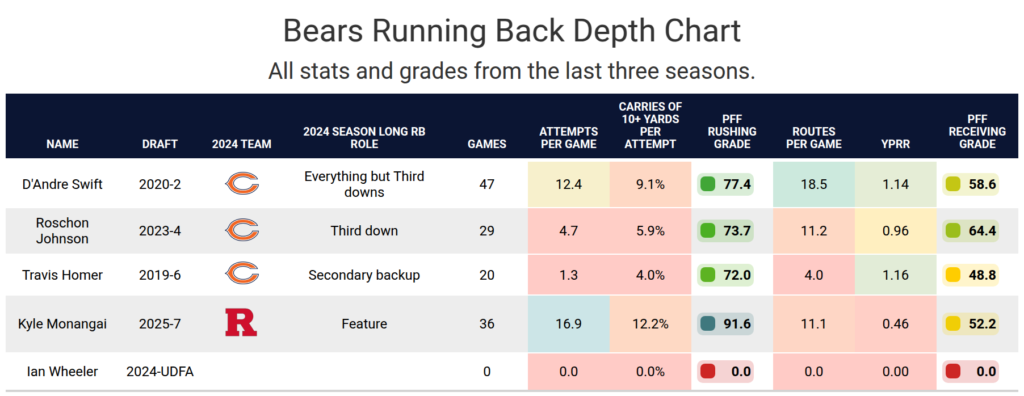
Winner: WR Tetairoa McMillan, Carolina Panthers
Most recent mock drafts had McMillan landing with the Dallas Cowboys or Jacksonville Jaguars. He would have been the second receiving option at best with either team, given the presence of CeeDee Lamb and Brian Thomas Jr., respectively. There were also plenty of mocks with McMillan falling to the second half of the first round. Instead, he was selected with a top-10 pick by one of the few teams that could use a No. 1 receiver.
The Panthers rotated Xavier Legette, Adam Thielen, Jalen Coker and David Moore last season, depending on who was healthy. McMillan is a prototypical X receiver, and the Panthers didn’t have a clear X receiver last season. Moore began the season as their X receiver with Legette at Z, and halfway through the season, they flipped roles in preparation for Thielen's return after he missed the first half of the season. Carolina can put McMillan at the X spot and let the other players rotate in the other two roles.
While there is always a chance McMillan will start the season as part of the rotation, this was still one of the top potential landing spots for a high target ceiling.
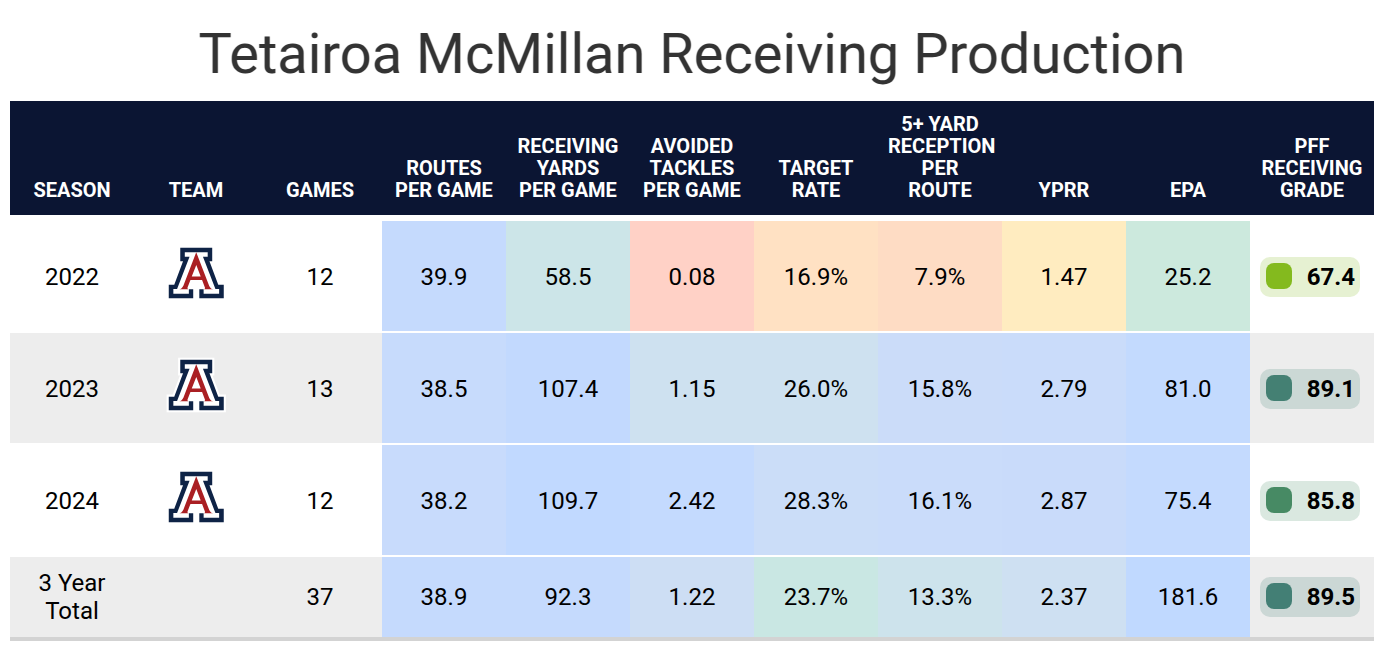
Winner: WR Jack Bech, Las Vegas Raiders
The Raiders were arguably the team that most needed a wide receiver in this draft. Only five of their wide receivers saw more than three targets last season, including Davante Adams, whom they traded early on, and DJ Turner and Terrace Marshall Jr., whom they opted not to re-sign. The Raiders have yet to add a wide receiver in free agency. This means Bech is penciled in as the third wide receiver at worst, and second at best.
Bech was a one-year starter at TCU who moved around in both the slot and out wide. Jakobi Meyers similarly has experience in the slot and out wide, so the two should complement each other and allow the offense to move players around. While Bech’s ceiling might be limited in an offense with Ashton Jeanty and Brock Bowers, his floor will be higher than most wide receivers picked in the second round or later.
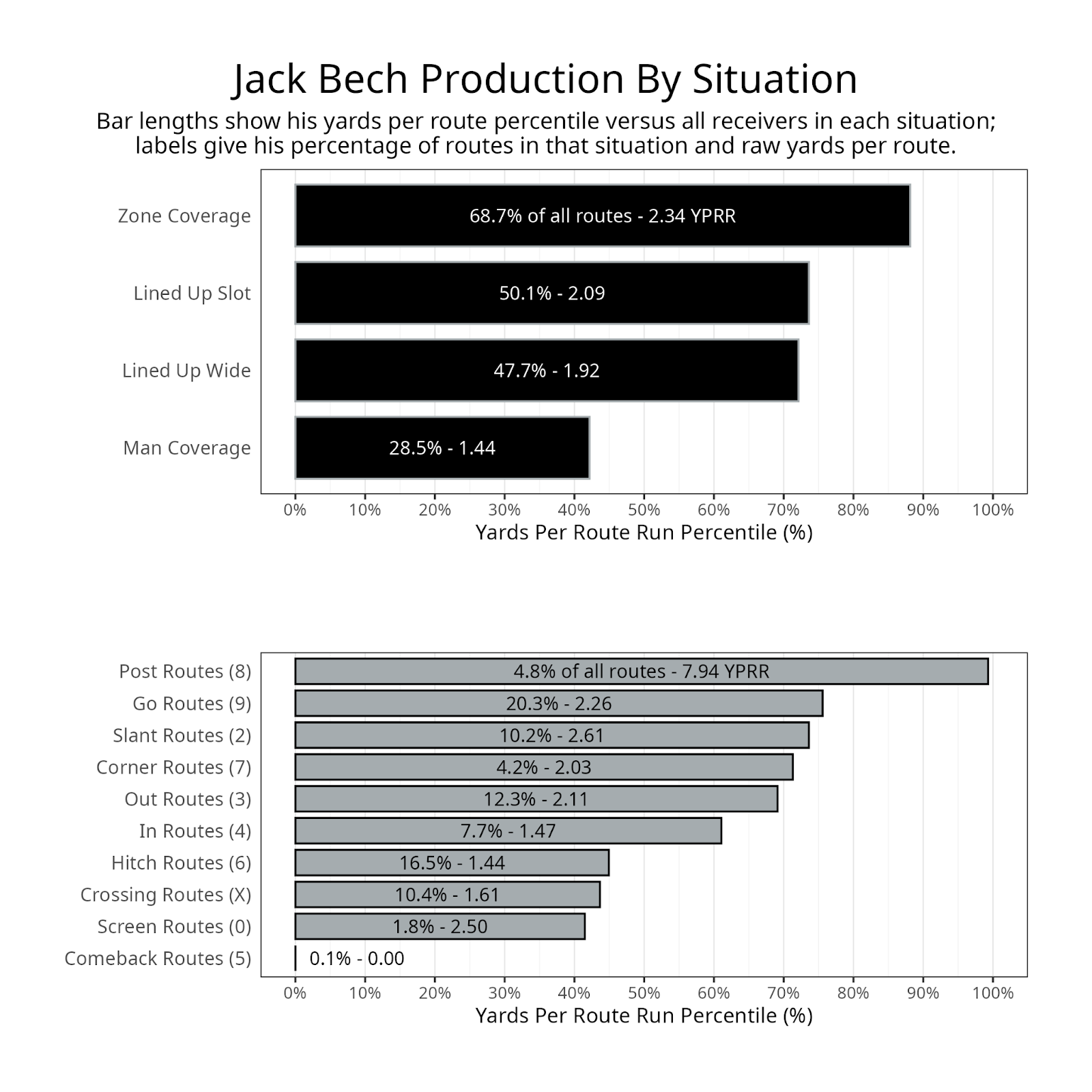
Winner: QB Tyler Shough, New Orleans Saints
Shough was the consensus fifth quarterback on the board and was expected to get drafted in the third round. He ended up as the 40th overall pick by the Saints and the third quarterback. Shough has a decent chance of starting for part or all of his rookie season. Derek Carr is dealing with a shoulder injury and could have season-ending surgery. The Saints reportedly don't have clarity on the situation. Shough should be able to beat out the other quarterbacks on the depth chart.
If Shough is the starter, he has a chance to be fantasy-relevant. He is one of the more athletic rookie quarterbacks, and while he didn’t run much in his one season at Louisville, he scrambled at a very high rate and ran with designed runs at a high rate at Texas Tech.
Saints head coach Kellen Moore just won a Super Bowl with another athletic quarterback, Jalen Hurts. While there is certainly a chance Carr will be ready for the season, or Shough’s rushing ability doesn’t translate to the NFL, the fact that there is a chance Shough could be a Week 1 starter with potential rushing production is better than what most expected for him heading into the draft.
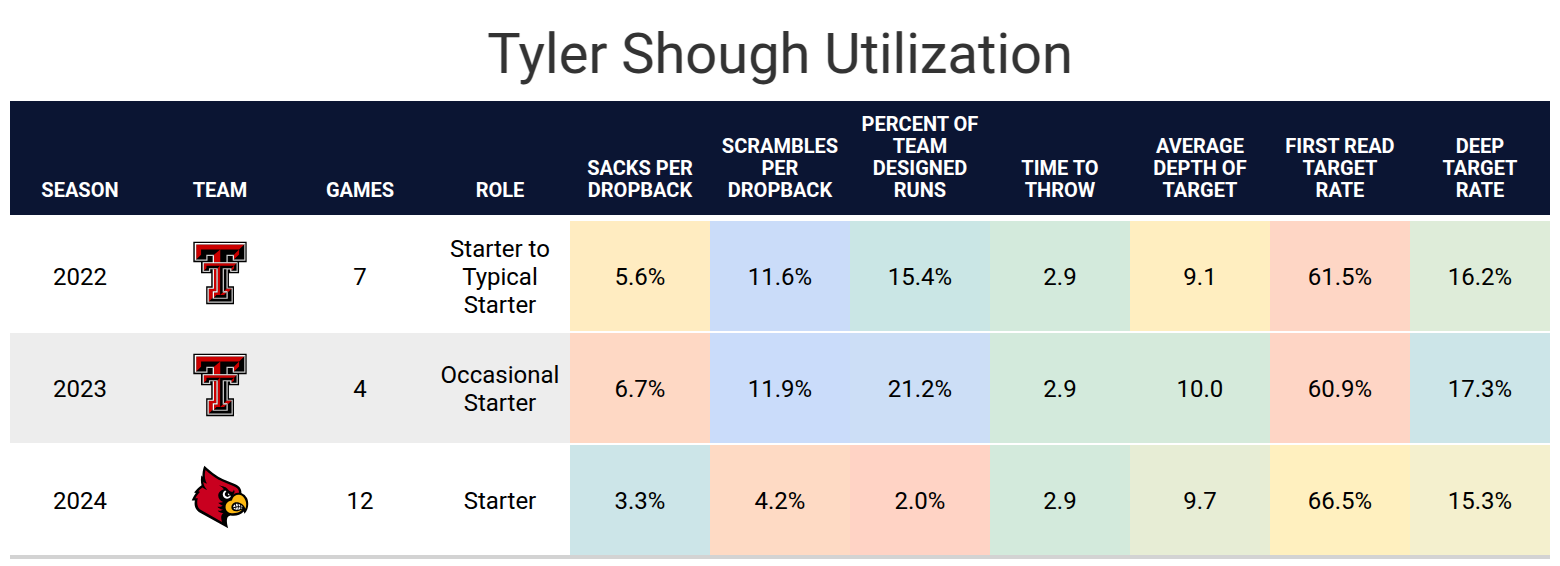
Winner: TE Mason Taylor, New York Jets
Most teams retained their primary receiving tight ends from last season, with a few exceptions. The Jets were one of two teams to let their lead tight end go. Three of the four teams that secured 600 receiving yards or fewer from their tight ends last season already addressed the position in free agency or the draft. That left the Jets as one of the very few landing spots for a Day 2 tight end to play significant snaps immediately.
Taylor will compete for snaps with Stone Smartt and Jeremy Ruckert, two players who have averaged less than 10 routes per game over the past three seasons. Jets offensive coordinator Tanner Engstrand spent the previous two seasons as the Detroit Lions’ passing game coordinator, contributing to Sam LaPorta‘s success. Taylor's situation appears even better when you consider the following two tight ends picked were Terrance Ferguson to the Los Angeles Rams and Elijah Arroyo to the Seattle Seahawks — two teams with an established veteran starter.

Loser: RB TreVeyon Henderson, New England Patriots
Henderson is the second-best receiving back in the 2025 class, behind Ashton Jeanty. Many fantasy analysts had him ranked third for dynasty rookie drafts because there was a chance he could see significant playing time on early downs. There were a few excellent potential landing spots, such as the following pick to the Chicago Bears or later to the Denver Broncos.
Instead, Henderson landed with the Patriots with Josh McDaniels as his offensive coordinator. McDaniels has consistently had a specific third-down back who was separate from his early-down backs. With the Raiders, it was Josh Jacobs on early downs and Ameer Abdullah on third downs. During the previous decade with the Patriots, it was Steven Ridley, LeGarrette Blount, Dion Lewis, Sony Michel and Damien Harris on early downs, and Danny Woodhead, Shane Vereen, James White and Brandon Bolden on third downs. Henderson will likely be a third-down back for the Patriots and won’t get many opportunities on early downs.
In 2018, White led the Patriots in offensive snaps, and Vereen did so in 2014. They finished 10th and 29th in fantasy points per game, respectively. However, those were also teams led by peak Tom Brady while defenses focused on Rob Gronkowski and Julian Edelman. Henderson can be an exception, like White or Vereen those years, but with Rhamondre Stevenson and Antonio Gibson on the roster, it might take a few years for Henderson to handle that significant of a role.
Loser: RB Najee Harris, Los Angeles Chargers
Typically, when a rookie is picked in the first round, the previously projected starter is a loser. Most first-round skill players landed on teams where we already expected that team to select a player. Harris is the most significant exception, as the Chargers added Omarion Hampton in the first round. Harris was projected to be the featured back in the Chargers' offense but signed only a one-year, $5.25 million contract. He received less guaranteed than players like Devin Singletary or Antonio Gibson received in free agency last season. While Harris will still receive playing time and could be the starter at the beginning of the season, it shouldn’t take long for Hampton to receive a clear majority of touches, allowing him to become a fantasy starter.
Harris can be a dependable early-down running back or backup, but he constantly lost playing time to Jaylen Warren last season and stayed fantasy-relevant by getting the ball when he was on the field. Hampton will take more playing time from Harris than Warren did, and it’s unlikely his touches per snap numbers will remain elite.
While there is always a chance the Chargers will make their rookie option wait to see significant playing time, all signs point to Harris being more of a handcuff for fantasy football purposes.
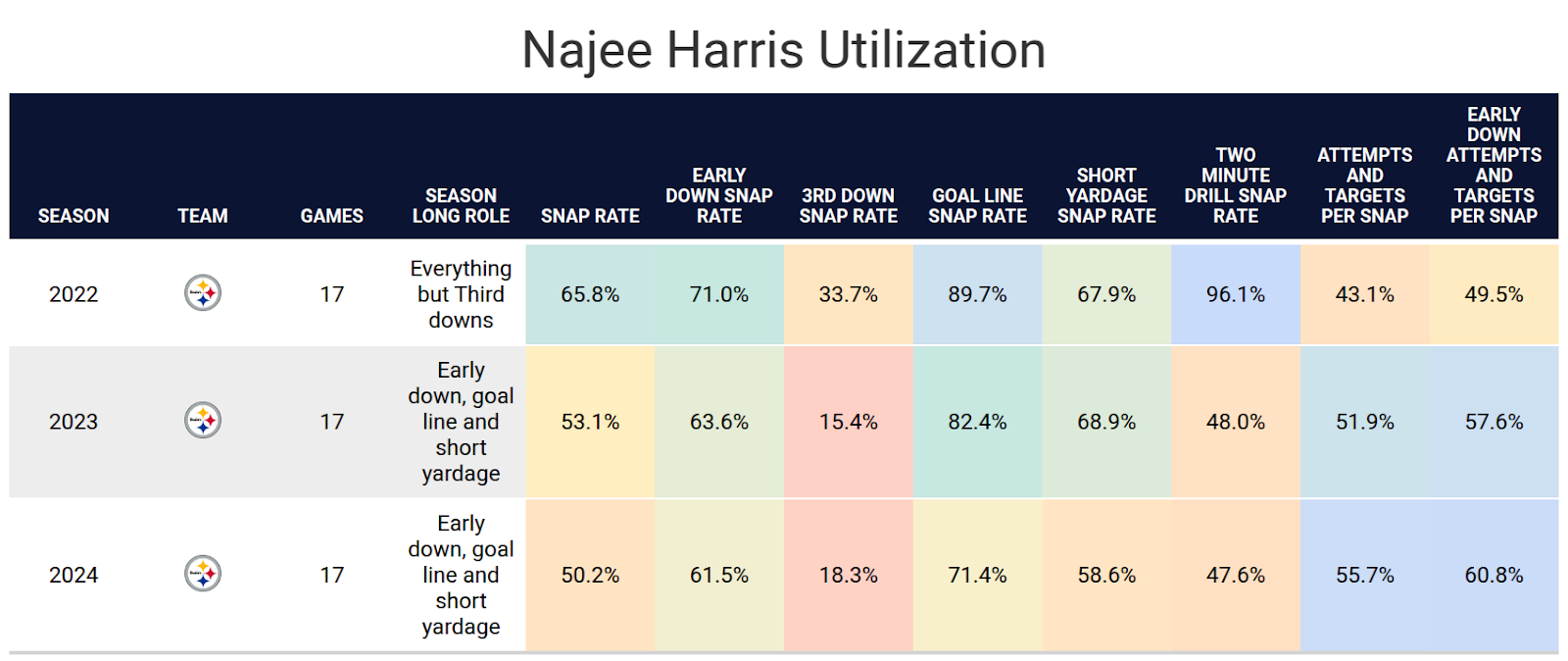
Loser: WR/DB Travis Hunter, Jacksonville Jaguars
In the days leading up to the draft, Hunter seemed destined to join the Cleveland Browns. General manager Andrew Berry had been adamant that Hunter would be primarily a wide receiver and secondarily a defensive back. Cleveland’s top wide receiver is Jerry Jeudy, and there was a reasonable enough chance that Hunter would surpass Jeudy to be the top target earner in the offense as a rookie.
But that all never came to fruition. The good news is that at the Jaguars' Day 1 press conference, head coach Liam Coen said Hunter would be a wide receiver first but would also get plenty of reps in practice on defense. There was also an emphasis on staying fluid. The projected usage sounds similar to how Berry has been speaking since the combine.
Last season, Jacksonville used Montaric Brown, Tyson Campbell and Ronald Darby on the outside. None of the trio earned a PFF coverage grade above 65.0, and Darby wasn’t re-signed. At wide receiver, Brian Thomas Jr. is the top target earner, which is unlikely to change. The team retained Parker Washington and Gabe Davis and added free agent Dyami Brown. There is a need at both positions.
The main reason Huner is listed as a “loser” is that the Jaguars have more depth at wide receiver than the Browns. Cleveland needed to keep Hunter on the field on offense as much as possible, while Jacksonville can survive with Hunter being in more of a rotation if need be. His target ceiling is also lower in Jacksonville because Thomas takes a high percentage of targets.
Hunter can still be a regular fantasy starter this season. Coen coached Mike Evans and Chris Godwin last season, and when both players were healthy, they were fantasy starters. However, landing with the Jaguars instead of the Browns increases the odds that Hunter's playing time on offense is relatively limited compared to most usual fantasy starting wide receivers.

Loser: WR Emeka Egbuka, Tampa Bay Buccaneers
If you ranked the teams that needed a wide receiver the most heading into the draft, the Buccaneers would be near the bottom of the list. They retained future Hall of Famer Mike Evans and re-signed Chris Godwin, and 2024 third-round pick Jalen McMillan began to shine late in his rookie campaign. This move is particularly puzzling because Egbuka played nearly three-fourths of his snaps out of the slot at Ohio State. The Buccaneers have Chris Godwin, who has been one of the most prolific slot receivers of the past decade and was a top wide receiver in fantasy points per game last season.
If no one in Tampa Bay is injured, it’s hard to imagine Egbuka becoming a fantasy starter in the near future. Even if Evans retires after the season, Godwin, McMillan and Egbuka are all more slot receivers or Z receivers, and not X receivers, making it challenging for the three to coexist. Both Godwin and McMillan will be on the roster for a minimum of two seasons.
While there is always a chance Egbuka’s talent will make him a fantasy starter, the road to get there will be much more challenging during his rookie contract compared to if he landed with nearly any other team.

Loser: TE Cole Kmet, Chicago Bears
The Bears spent the 10th overall pick on Michigan tight end Colston Loveland despite Kmet having spent a few years as one of the top tight ends in offensive snaps with improving PFF grades. Last season was a step back for Kmet, though. He was a backup at the start of the season in a rotation with Gerald Everett. His PFF receiving grade also declined.
Kmet should still play plenty of snaps as the Bears' primary blocking tight end, but he is unlikely to be fantasy-relevant in Chicago with Loveland likely to take the passing-down snaps. Kmet's presence also makes it challenging to call Loveland a winner, despite being the first tight end picked. While there is a chance Loveland will be Chicago’s top target in the middle of the field, there is also a chance he only plays 50%-60% of the team's offensive snaps due to his lack of blocking mixed with Kmet’s experience as a blocker.
Loveland will be a high-risk, high-reward option, while fellow rookie tight end Tyler Warren, who was drafted by the Indianapolis Colts at No. 14, will be the safer rookie option.
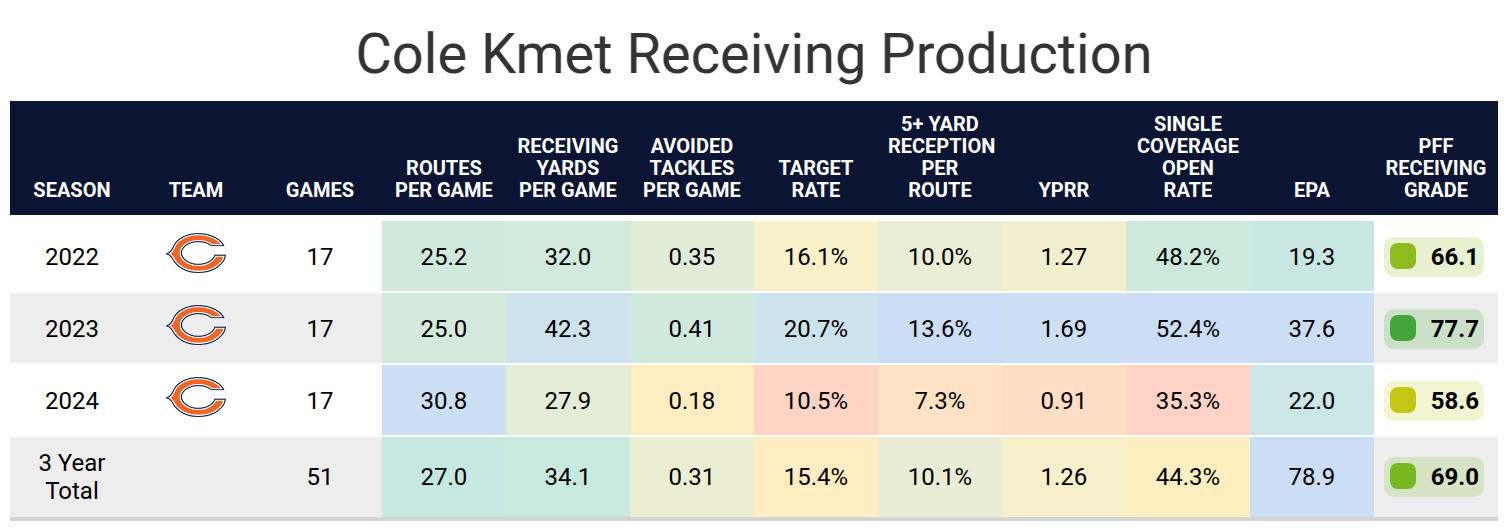
Loser: QB Shedeur Sanders, Cleveland Browns
Sanders was considered a top-three pick a few months ago but fell to Day 3 of the draft. He joins a very crowded quarterback room, where he’s currently fourth on the depth chart. It’s always possible for a player to move up a spot or two on the depth chart, but it will be difficult for Sanders to get enough reps to make a significant jump.
The Browns also acquired the Jacksonville Jaguars‘ first-round pick in 2026, giving them two first-rounders next year. That class should have more high-end quarterback talent than this year, and it will likely be how the Browns find their quarterback of the future.
There may be enough injuries and benchings that Sanders gets a chance to start this year, but there is also a chance he doesn’t make the roster. The only quarterback drafted in the fifth round in the past two decades to rack up more than 2,000 passing yards in a season was Sam Howell in 2023.
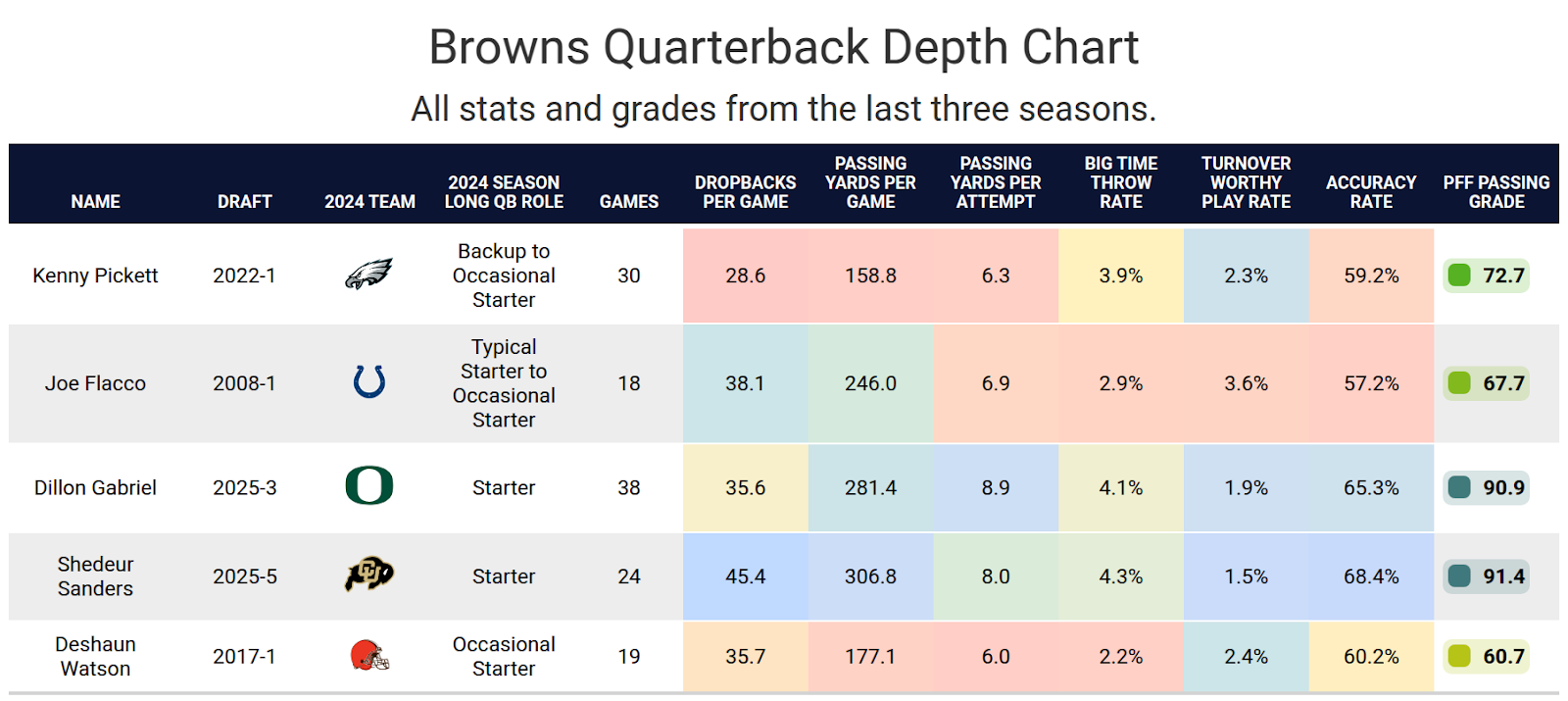



 © 2025 PFF - all rights reserved.
© 2025 PFF - all rights reserved.